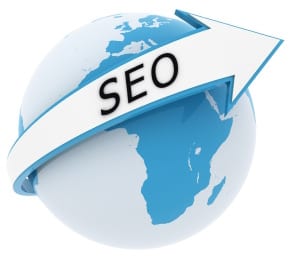Key points to implement an effective global SEO strategy
 Ecommerce sales are set to exceed $1trillion next year (according to Goldman Sachs) and, in the current economic climate, many businesses are considering exporting their goods and services abroad.
Ecommerce sales are set to exceed $1trillion next year (according to Goldman Sachs) and, in the current economic climate, many businesses are considering exporting their goods and services abroad.
However, going global can be daunting. The process of localising and optimising your website for overseas territories requires careful consideration before you launch your SEO strategy.
Here are the top 10 common multilingual SEO mistakes to be avoided……….
1 Using the wrong keywords
The keyword a person in your domestic market might use to search for a specific product may not necessarily be a literal translation of the keywords or phrases used by buyers in other countries.
Despite this being the most basic of errors, it is one people continue to make.
Do not translate your keywords and don't forget to research new target markets in terms of keywords used, subsequent search volumes and the competition for that term.
2 Ignoring nuances in local languages and a lack of cultural sensitivity
Localised content is often not in line with the language nuances of local customers. Many people use translation tools to translate content or keywords but these tools are simply not up to the challenge. Even non-native speaking human translators can sometimes fail to capture the phrasing needed to encourage a sale.
Consider the subtle differences between territories speaking the same languages, for example, the differences in German spoken in Germany and Austrian German.
Content should be drafted by a native speaker so it is more likely to engage visitors by ensuring that colloquialisms, nuances and tone are appropriate.
See our past post on the importance of having native speakers working on your search campaigns.
Remember - your overseas visitors can also be put off by images and style – these are just as important as words. What is culturally acceptable in one country does not always suit users in another.


Images that resonate in the US may not appeal to buyers in France, for example
3 Failing to understand local market trends
Off-page link building activities rely on a true understanding of the way people use the web and social media in the target country. For example, in Korea blogs are a major part of any strong web presence. Subtle variations in internet usage will dictate the off-page strategy you should use.
4 Ignoring search engines other than Google

It can be easy to ignore search engines that are only popular in certain territories. Depending on which countries you wish to target, Google may not be the dominant search engine. Yandex in Russia, Baidu in China and Naver (or Daum) in South Korea are all major search engines you should familiarise yourself with in planning global SEO.
Each search engine has its own indexing policy and applies its own weightings to things like content, links and social sharing. It’s important to consult an expert if you are unsure on the best approach.
5 Ill-thought out geo-targeting and website localisation
Businesses often feel that a wholly localised domain is the only or best option. However, being realistic, how your native site is registered will have a bearing on the approach that should be taken.
Many of the world’s biggest brands, such as Apple, effectively use one .com top level domain (TLD) with subfolders or subdirectories for each international market site. A ‘.co.uk’ site, however, should consider registering a country specific TLD to provide a level of local assurance and familiarity amongst local customers.
6 Failing to implement multilingual mark-ups
Complex even for seasoned SEOs – sites should be implementing the Google multilingual mark-up. The new rel=“alternate” hreflang link element helps Google understand content specifically produced for multiple geographic regions. It’s essential.
7 Not updating Webmaster Tools
Site owners often forget to utilise Webmaster Tools effectively for multilingual SEO. Webmaster Tools help Google to understand which territories your website is targeting and is simple and easy to do.
8 Use of cookie-based language selectors
Google cannot read cookies, so using an on-site language selector that relies on cookies is less than ideal in helping Google understand what countries/languages your website is targeting.
9 Forgetting to gain link authority in local markets
Simply building lots of links to your .com website is not going to be enough to help you rank on competitive terms in international markets. High quality content-rich links need to be built in-country. You must reach out to local webmasters, bloggers and online influencers and obtain links from local domains.
10 Lacking deep page linking structure
Many webmasters make the mistake of allowing their onsite language selector to redirect their visitors to the homepage for their chosen country.
Instead, you should ensure your deep pages link to like-for-like pages when visitors switch between languages. This is important, not only for the flow of link juice and authority but also for usability.
Consider these common mistakes and take your time with multilingual SEO – it is by far the hardest type of SEO. Done right however – it is also hugely profitable!
 Thanks to Jimmy McCann for sharing his advice and opinions in this post. Jimmy is Head of SEO at Search Laboratory in Leeds. You can follow him on Twitter or connect on LinkedIn.
Thanks to Jimmy McCann for sharing his advice and opinions in this post. Jimmy is Head of SEO at Search Laboratory in Leeds. You can follow him on Twitter or connect on LinkedIn.
With thanks to Global image and Optimum7.com for use of the featured images.






 Thanks to
Thanks to 

